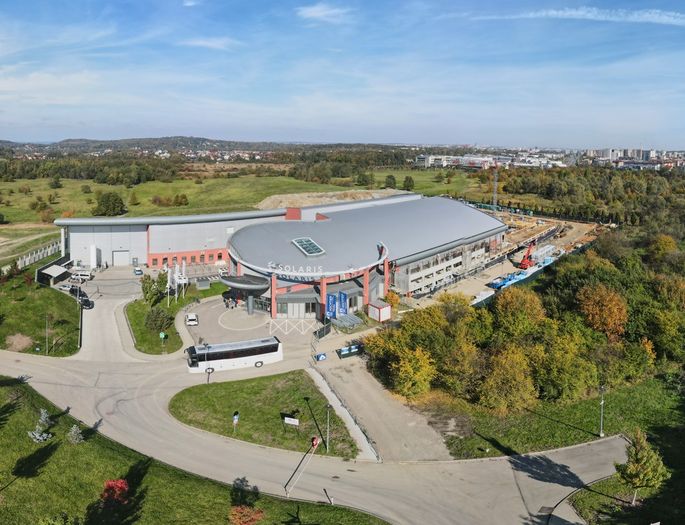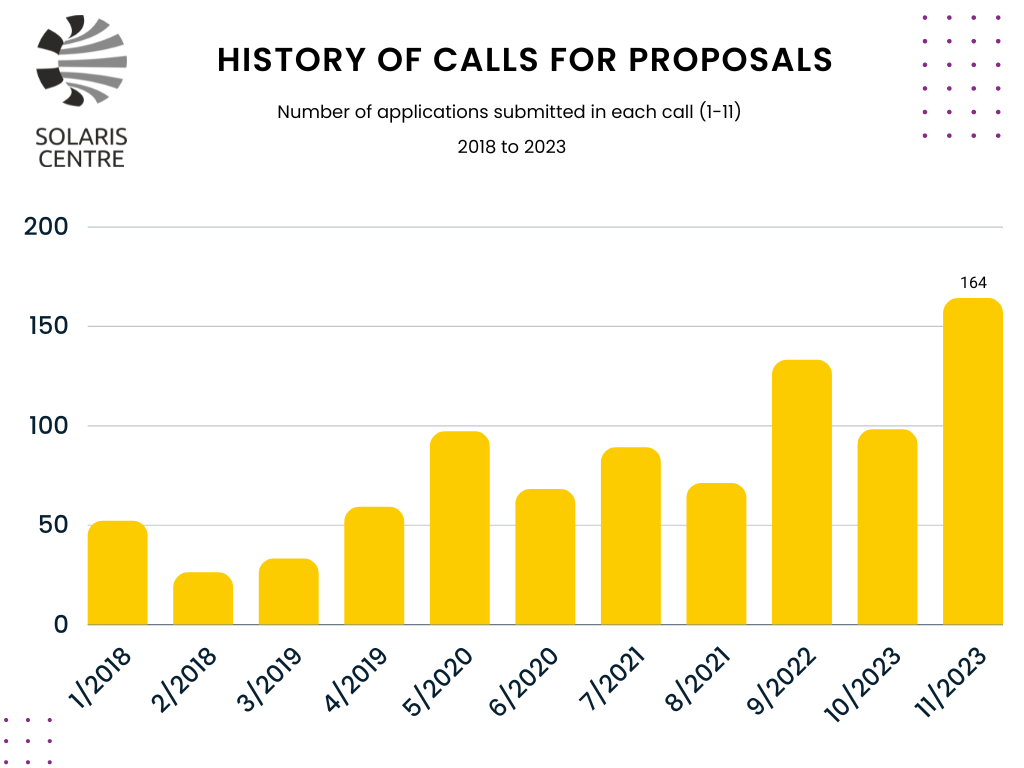
The eleventh call for proposals for research using the infrastructure of the National Synchrotron Radiation Centre SOLARIS has recently concluded, providing scientists with the opportunity to apply for research time on one of the available research beamlines. These research beamlines include ASTRA, DEMETER (PEEM, STXM), PHELIX, PIRX, URANOS, and the Titan Krios G3i electron microscope. Researchers from both Poland and abroad have submitted a record number of applications.
Throughout March, researchers from Poland and other countries submitted research proposals in the DUO system, which can be accessed at https://duo.synchrotron.pl. In this 11th call for proposals, the POLYX and CIRI beamlines were made available for the first time in Expert Commissioning Access mode, using ‘Fast Access’. The CIRI beamline is currently operating without a synchrotron beam, using laboratory light sources instead.
In total, a record-breaking 164 applications were received during this call, with scientists applying for 15,340 research hours on the provided infrastructure. The ASTRA beamline, which enables X-ray absorption spectroscopy, was the most sought-after among users, with 51 requests for research time. Of these applications, 35% were foreign, while 65% were submitted by Polish scientists.
Currently, the applications will undergo technical evaluation, followed by review by an independent international committee of experts. The best projects will be awarded beamtime, which will run from October 2023 to February 2024.
It is worth noting that each call for proposals is gaining in popularity among scientists from Poland and abroad. The increasing number of available research beamlines allows for increasingly advanced and diverse research and experiments. This is evident from the growing number of scientific publications appearing in recognizable journals each year, in which the results were obtained using SOLARIS infrastructure.
In conclusion, the recent call for proposals for research time using SOLARIS infrastructure was a huge success, attracting a record number of applications.

SOLARIS NSRC is a national science centre providing open access to research infrastructure. As a unique source of synchrotron radiation in Central Europe, it opens new perspectives in many areas of basic and applied research, offering a wide spectrum of modern research techniques. SOLARIS NSRC is a platform for the development of national and international cooperation, as well as an incubator of new technologies.
SOLARIS NSRC, in cooperation with the national and international scientific community, designs, creates and makes available research infrastructure to carry out measurements using unique experimental methods based on synchrotron radiation properties. The Centre’s infrastructure serves basic and applied research in such areas as catalysis, biomedical engineering, nanomaterials, pharmacology or geology. It facilitates the search for new energy sources and solutions for future electronics.
SOLARIS NSRC stimulates the cooperation of Polish scientists with industry in finding new technical solutions with commercial potential. It is also an important centre of science promotion.
Source: SOLARIS website





